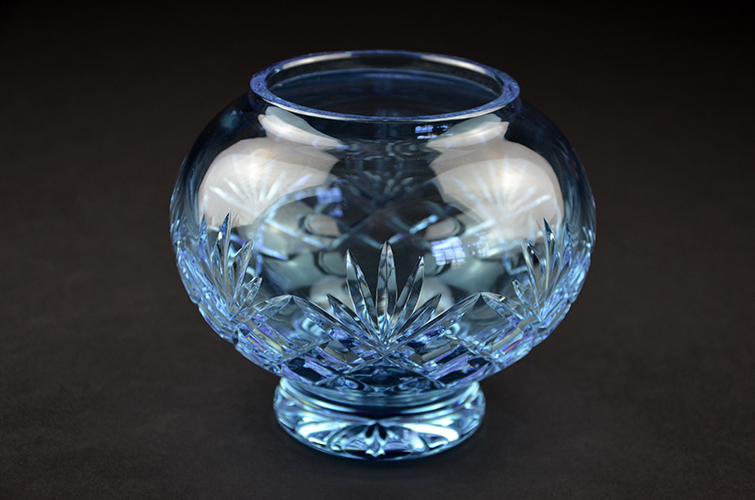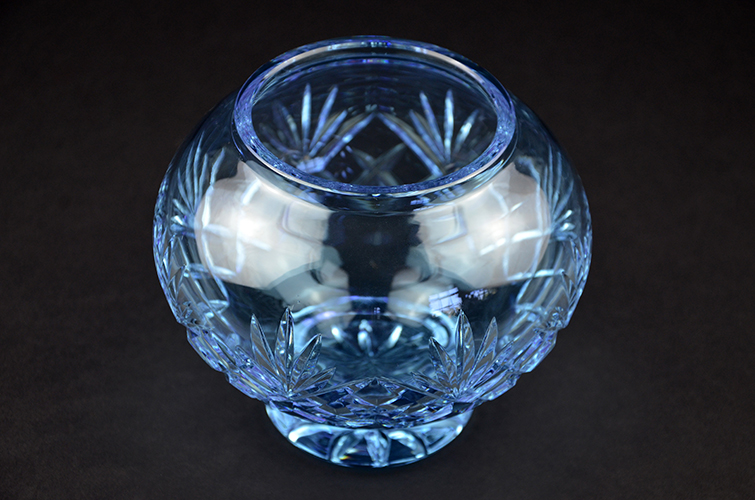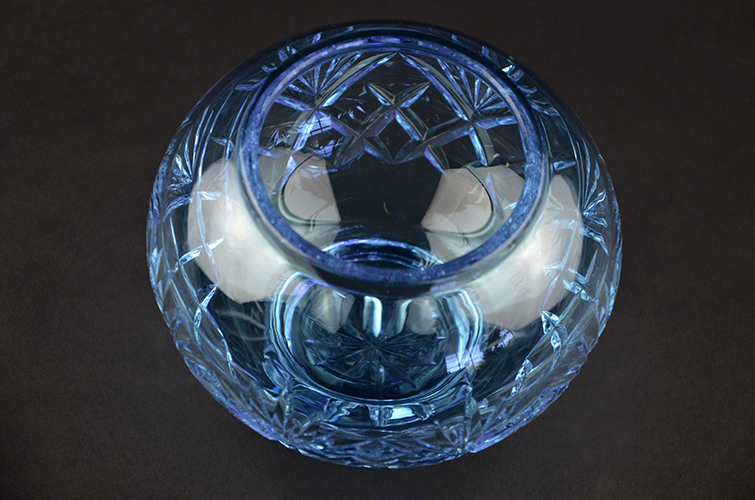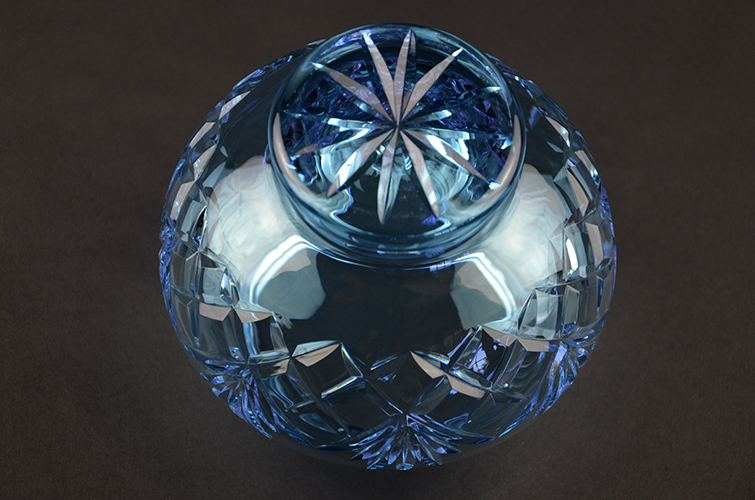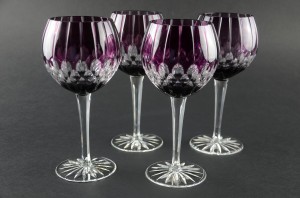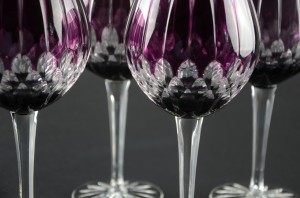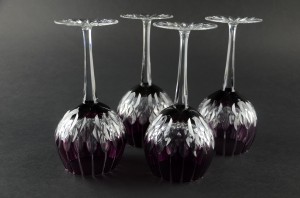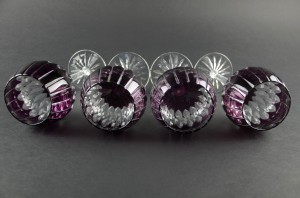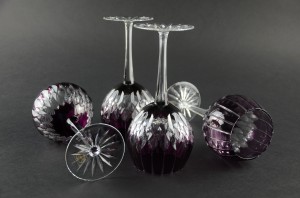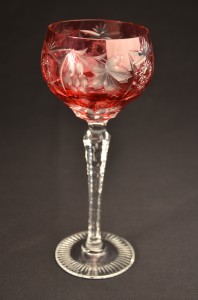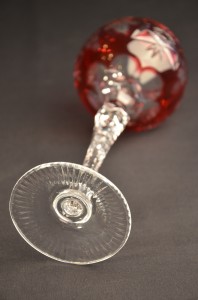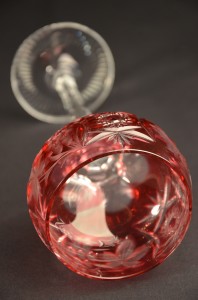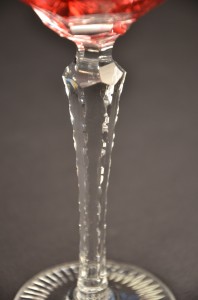VISIT US! Beautiful piece of alexandrite glass. Appears to be a piece of contemporary crystal glassware. Lavender purple in incandescent light; light blue in fluorescent light. Approximate dimensions: 6″ (max diameter) x 5 1/2″ (h). c. contemporary. Unknown origin.
“The first commercial use of purified neodymium was in glass coloration, starting with experiments by Leo Moser in November 1927. The resulting “Alexandrite” glass remains a signature color of the Moser glassworks to this day. Neodymium glass was widely emulated in the early 1930s by American glasshouses, most notably Heisey, Fostoria (“wisteria”), Cambridge (“heatherbloom”), and Steuben (“wisteria”), and elsewhere (e.g. Lalique, in France, or Murano). Tiffin’s “twilight” remained in production from about 1950 to 1980. Current sources include glassmakers in the Czech Republic, the United States, and China.
The sharp absorption bands of neodymium cause the glass color to change under different lighting conditions, being reddish-purple under daylight or yellow incandescent light, but blue under white fluorescent lighting, or greenish under trichromatic lighting. This color-change phenomenon is highly prized by collectors. In combination with gold or selenium, beautiful red colors result. Since neodymium coloration depends upon “forbidden” f-f transitions deep within the atom, there is relatively little influence on the color from the chemical environment, so the color is impervious to the thermal history of the glass. However, for the best color, iron-containing impurities need to be minimized in the silica used to make the glass. The same forbidden nature of the f-f transitions makes rare-earth colorants less intense than those provided by most d-transition elements, so more has to be used in a glass to achieve the desired color intensity. The original Moser recipe used about 5% of neodymium oxide in the glass melt, a sufficient quantity such that Moser referred to these as being “rare earth doped” glasses. Being a strong base, that level of neodymium would have affected the melting properties of the glass, and the lime content of the glass might have had to be adjusted accordingly.”
References
https://en.wikipedia.org/wiki/Neodymium
